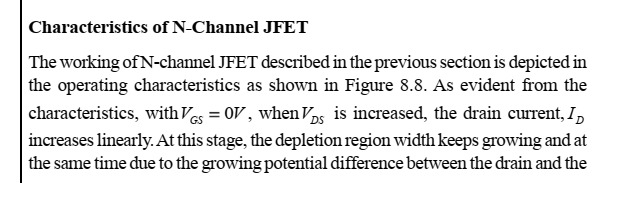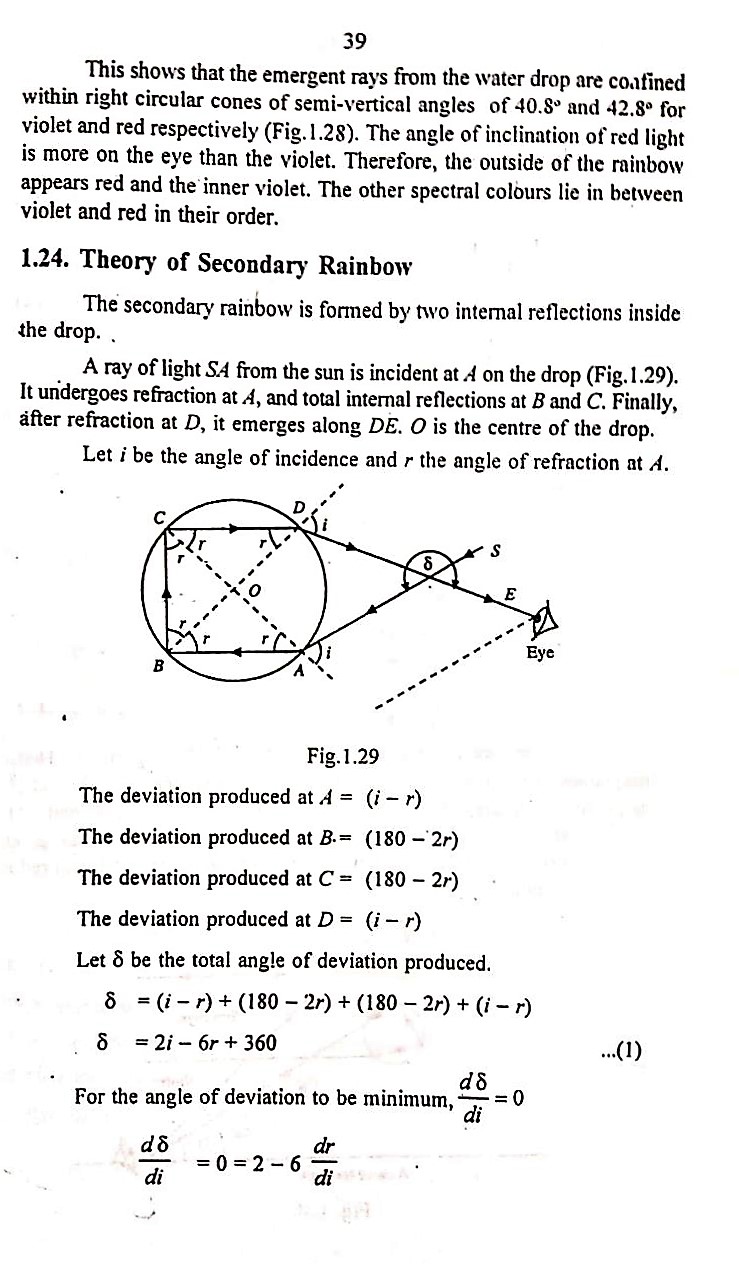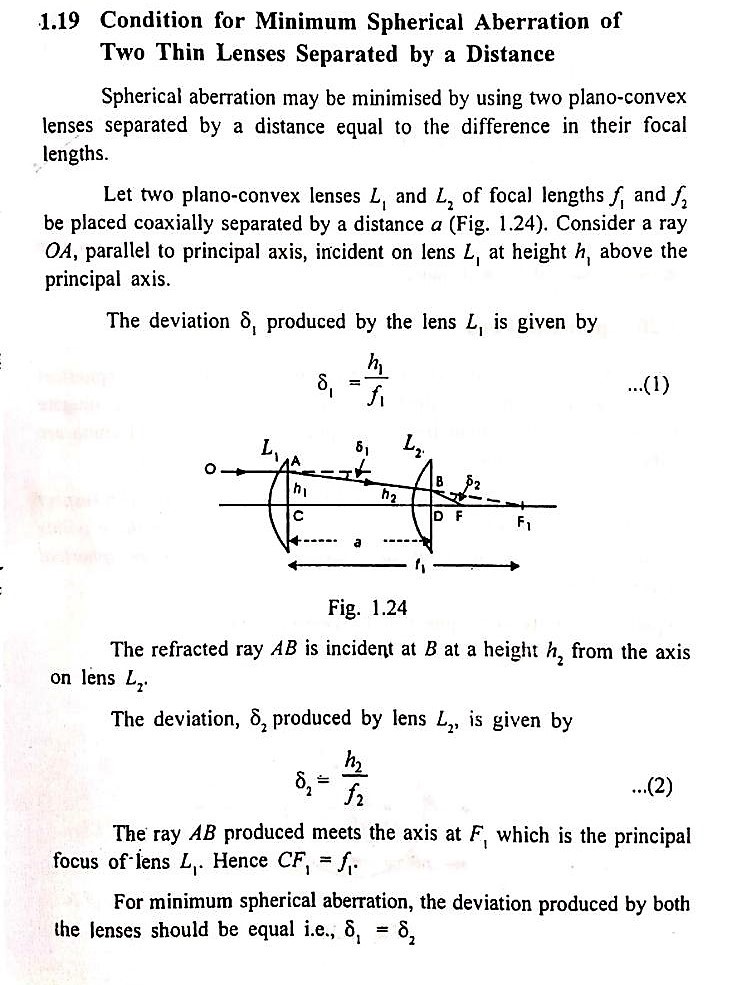Click HERE to Download Presentation as a PDF
Click HERE to Download Presentation as PPT
Allied - Properties of Matter,Thermal Physics and Optics - University Questions Provided by Prof.G.Gangatharan
Click HERE to download Allied - Properties of Matter,Thermal Physics and Optics - University Questions
Solid State Physics - Crystal Physics Notes and Model University Questions
Click Here To HERE to Download Solid State Physics Notes Provided By Prof.G.Gangatharan
Click HERE to Download Model Question I
Click HERE to Download Model Question II
Click HERE to Download Bonds in Solids as a Power Point Presentation
Click HERE to Download Bonds in Solids as a PDF
Click HERE to Download Model Question I
Click HERE to Download Model Question II
Click HERE to Download Bonds in Solids as a Power Point Presentation
Click HERE to Download Bonds in Solids as a PDF
III Internal Test - Analog Electronics -7BPH5C1
Analog Electronics - 7BPH5C1
III Internal Test
Time : 2 Hrs Marks: 40
PART - A 5 x 2 = 10
1.What is negative feedback?
2. State Barhausen Criterion.
3.Define Bandwidth.
4.Write note on collector efficiency.
5.Draw the symbol of an Op-Amp.
PART - B 2 x 5 = 10
2.List the differences between voltage and power amplifiers.
3.List the Characteristics of an Ideal Op-Amp
4.Explain the working of an Op-Amp as an integrator
PART - C 2 x 10 = 20
2.With neat diagram explain the working of Hartley Oscillator.
3.Discuss the working of Instrumentation Amplifier with appropriate diagram.
II Internal Test - Analog Electronics
Analog Electronics - 7BPH5C1
II Internal Test
Time : 2.5 Hrs Marks: 40
PART - A 5 x 2 = 10
1.What is Stability Factor? Give its importance.
2.Write note on Thermal Runaway.
3.Define Input Impedance of a CE Amplifier
4.Write an Expression for Power Dissipation in a CE Amplifier
5.Define CMRR
PART - B 2 x 5 = 10
2.Write note on Cut Off and Saturation Points.
3.Draw the DC Equivalent Circuit of Single Stage CE Amplifier and Explain its function.
4.Compare different types of Coupling Schemes for Multistage Amplifier.
PART - C 2 x 10 = 20
2.Describe the working of inverting and non-inverting amplifiers using op-amps.
3.Discuss the working of Op-Amp Differentiator and Adder circuits.
II Internal Test - Optics And Spectroscopy
Optics and Spectroscopy - 7BPH3C1
I Internal Test
Time : 2.5 Hrs Marks: 60
PART - A 5 x 2 = 10
1. What is the difference between polarized and polarized light?
2. What is double refraction?
3. State Biot's law of Optical Activity.
4. Write note on Selection Rules.
5. What is Anti-Stokes line?
PART - B 4 x 5 = 20
2.Give the Theory of Half Wave Plate.
3.Explain Vibrational Raman Spectra.
4.Explain Pure Rotational Raman Spectrum of Diatomic Molecules.
PART - C 3 x 10 = 30
2. Define Specific Rotation and Explain Fresnel Theory of Optical Activity.
3. Discuss the Quantum Theory of Raman Effect.
Dielectric Properties - PPT and PDF To Download - Solid State Physics Material by Prof.G.Gangadharan
Click HERE To Download Dielectric Properties as a PPT
Click HERE To Download Dielectric Properties as a PDF
Click HERE To Download Dielectric Properties as a PDF
Symphonies of The Dead Beethoven
When Beethoven passed away, he was buried in a churchyard. A couple days later, the town drunk was walking through the cemetery and heard some strange noise coming from the area where Beethoven was buried. Terrified, the drunk ran and got the priest to come and listen to it. The priest bent close to the grave and heard some faint, unrecognizable music coming from the grave. Frightened, the priest ran and got the town magistrate.
When the magistrate arrived, he bent his ear to the grave, listened for a moment, and said, "Ah, yes, that's Beethoven's Ninth Symphony, being played backwards."
He listened a while longer, and said, "There's the Eighth Symphony, and it's backwards, too. Most puzzling." So the magistrate kept listening; "There's the Seventh... the Sixth... the Fifth..."
Suddenly the realization of what was happening dawned on the magistrate; he stood up and announced to the crowd that had gathered in the cemetery, "My fellow citizens, there's nothing to worry about. It's just Beethoven decomposing."
Infinity Column - A Dog or A Cat or A Cat and A Dog or A Dog and A Dog or A Cat and A Cat or What???
"Once upon a time when the Alice of Wonderland was a little girl she owned two pets named Tinah and Kinah" I told my son Omar Khayyam and his friend Avicenna. "What kind of pets are they?" asked my son. "Ha ! That's a mystery, Tinah is either a cat or a dog" I answered, "But I won't tell you which, Kinah is also a cat or a dog, But again I won't tell you which."
"Are they same or different?" asked the Avicenna now. "I mean is one of them a cat and the other a dog, or are they both dogs or both cats?"
I replied "It could be that they are the same, or again it could be that they are different"
"I'll bet that they are not both cats," said Omar Khayyam.
"I'll bet Tinah is a cat," said Avicenna.
"Just a minute now," I objected "What is the basis for your guesses?"
"None!" said Omar Khayyam, "but were we right or wrong?"
I thought for a moment. "You know," I said, "It's a funny thing! It so happens that either both of you are right or both of you are wrong, but I won't tell you which !"
From this, the boys were able to deduce whether Tinah is a cat or a dog and whether Kinah is a dog or a cat.
What are they?
Short Q & A For the I Internal Test
1.What are extrinsic semiconductors?
An Extrinsic Semiconductor is a semiconductor material doped by a specific impurity, which is able to modify its electrical properties,making it suitable for electronic applications with specific purposes. An extrinsic semiconductor may be of P type with holes as majority charge carriers or of N type with electrons as majority charge carriers.
2. What is a Crystal Diode?
A crystal diode is made by making a cat whisker metal wire tip in contact with a silicon or germanium crystal under pressure. During the manufacture of the point contact diode, a relatively large current is passed from the cat whisker to the silicon crystal. The result of this large current is the formation of a small region of p-type material around the crystal in the vicinity of the point contact.Thus, a PN-junction is formed which behaves in the same ways a normal PN-junction.3.
3. Define Ripple Factor
Ripple factor of a rectifier is defined as the ratio of the root mean square value of AC component of the output to the average DC component of the output.
4. Define Current Gain of a CC Amplifier
Common collector current gain is defined as the ratio between emitter current and base current in common collector configuration.
Viz.,
5. Define Operating Point of a Transistor
The operating point of a transistor, also known as bias point, quiescent point, Q-point, is the steady-state (DC) voltage or current at a specified terminal of the transistor with no input signal applied.
Photonic Feathers - A Feat of the Domestic Pigeon
When we see a domestic pigeon, we are all(OK almost all) enthralled by its grace and beauty. But more than that we physicists are fascinated by a feat of the domestic pigeon.This feat is having an ornament of seduction around its neck. This ornament,an iridescent ring of feathers around the neck(only for males sorry), is mesmerizing to look at.
The shiny metallic colors changes with the change in our viewing angle. This is a signature of interference and diffraction. The iridescence reflects the underlying micro-structure of the neck feathers. These feathers contain barbules, a tilted lattice of fine threads, making a multilayered structure which can selective certain colors in specific directions as dictated by the wavelengths of those colors and the lattice spacing. This phenomenon as a student of physics must know is what we call as interference(Basically, Waves which encourage or discourage other waves they met to sing aloud or shine bright together depending on their (phase) differences).
Here is a video I captured with my mobile of a captured pigeon during the Independence Day celebration at our college premises. You can see the neck-feather's color changes from green to purple and back depending on the view angle. Isn't that good to look at?
Infinity Column - A Helper Puzzle to The Rara Avis
This is a helper problem that might help you to solve the Poisoned Sherbet Puzzle posted a couple of days ago.
So Solve this one first and then solve that puzzle.
Suppose you have eight gold coins, One of them is slightly heavier, but the only way to tell is by putting it on a scale against the others. What’s the fewest number of times you’d have to use the scale to find the heavier coin?
Infinity Column - A Rara Avis
There again in the Wonderland of Alice's, there was a party the Mad Hatter arranged for his friends and foes alike. But despite that fact a vile foe of him poisoned a single tumbler of flavored serbet before he was caught red handed.But unfortunately in the hustle that followed, the poisoner himself forgot which tumbler he had poisoned.
When the Mad Hatter was informed of this fact and asked if the contents of all the tumblers had to be poured out in the sink, he came over and had a glance at the tumblers, then he smiled blissfully and asked to take a single tumbler out of them and chemically test it for the poison.
When the Mock Turtle asked if that would be enough, the Mad Hatter replied "Certainly not but that will strategically minimize our effort" .At last the poisoned tumbler had been singled out after a few tests and the party went on forever afterward as ever repeating itself.
You have to find:
What was the exact number of tumblers?
If you ask me for a clue, all I know, as I was told by the Time himself, is that there were somewhere between two hundred and three hundred tumblers of serbet to be served at the party.
I Internal Test - Optics and Spectroscopy
Optics and Spectroscopy - 7BPH3C1
I Internal Test
Time : 2.5 Hrs Marks: 60
PART - A 5 x 2 = 10
1. State Stoke's Law
2. List the uses of air wedge.
3. State Rayleigh Criterion for resolution.
4. Define resolving power of a prism.
5. State any two differences between Fresnel and Fraunhofer diffraction.
PART - B 4 x 5 = 20
2.Distinguish between Fresnel and Fraunhofer diffraction.
3.Explain the Fresnel diffraction at a circular aperture.
4.Derive an expression for. resolving power of grating.
PART - C 3 x 10 = 30
2. Give the theory of plane transmission grating. Describe an experiment to determine the wavelength of sodium lines.
3. Describe Fraunhofer diffraction at single slit.Derive an expression for the separation between first maxima.
I Internal Test - Analog Electronics
Analog Electronics - 7BPH5C1
I Internal Test
Time : 2.5 Hrs Marks: 60
PART - A 5 x 2 = 10
1.What are extrinsic semiconductors?
2.What is a crystal diode?
3.Define ripple factor.
4.Define current gain of a transistor in CC mode.
5.Define operating point of a transistor.
PART - B 4 x 5 = 20
2. Derive relation between alpha and beta.
3. Compare the characteristics of transistors connected in CB,CE and CC mode.
4. Compare different types of coupling in multistage amplifier.
PART - C 3 x 10 =30
2.Explain the Voltage Divider Bias method for biasing a transistor.
3.Describe the working of a single stage CE amplifier with a neat diagram.
Fixed Base Bias - Unruly Behavior at a High β Value Vs Feedback Resistor Bias For the Same β - No Clipping and Harmonics
Click This LINK to Interact with the Simulation of Fixed Base Bias - CE Amplifier. Note that negative half cycles are nearly cut-off at the output. Also look at the presence of harmonics in the output's frequency spectrum.
Click This LINK to Interact with the Simulation of Feedback Resistor Bias - CE Amplifier.No clipping, distortion and the presence of harmonics in the output's frequency spectrum though the gain has been sacrificed a bit.
Click This LINK to Interact with the Simulation of Feedback Resistor Bias - CE Amplifier.No clipping, distortion and the presence of harmonics in the output's frequency spectrum though the gain has been sacrificed a bit.
Subscribe to:
Posts (Atom)


















































